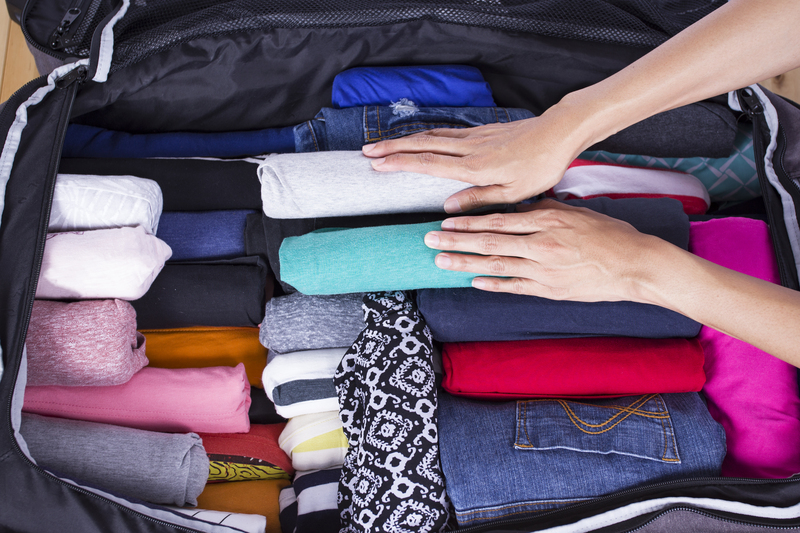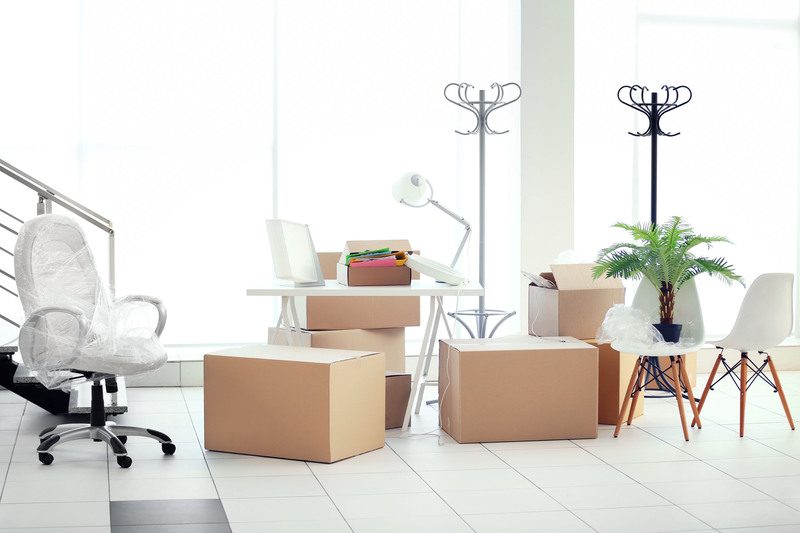Transition your bed and mattress efficiently during your move
Posted on 17/06/2025
How to Transition Your Bed and Mattress Efficiently During Your Move
Relocating to a new home is a multifaceted process, and one of the bulkiest, most essential items you'll need to transition is your bed and mattress. This crucial step can pose unique challenges--beds are awkward to dismantle, mattresses are heavy, and both require careful handling to avoid damage. To ensure a smooth mattress and bed transition during your move, follow the practical strategies in this comprehensive guide.
Why Efficient Bed and Mattress Transition Is Crucial
Efficiently moving your bed and mattress not only keeps your sleep setup in good shape but also:
- Protects your investment -- Quality beds and mattresses can be expensive; improper handling may lead to costly replacements.
- Saves time and stress -- Streamlining disassembly, packing, and reassembly minimizes disruption.
- Ensures hygiene -- Careful packing wards off stains, dirt, and pests during transit.
The following sections explore step-by-step methods for moving your bed frame and mattress efficiently, addressing common mistakes to avoid, and delivering expert tips for seamless transition.

Pre-move Preparation: Setting Yourself Up for a Smooth Transition
1. Gather Required Supplies
- Mattress bags or covers (to prevent tears or stains and defend against moisture and pests)
- Furniture blankets or pads (for headboards, footboards, and frames)
- Stretch wrap or moving tape
- Tool kit (screwdriver, Allen wrenches, pliers)
- Plastic bags and labels (for nuts, bolts, and hardware)
- Moving straps or handles (especially for heavy or oversized mattresses)
- Permanent markers (to label parts for easy reassembly)
2. Measure Everything
Before you begin, measure your bed frame, mattress, and all entryways--including doors, hallways, elevators, and currents rooms at both the old and new locations. This ensures you'll know the best paths and whether you'll need to disassemble larger pieces to fit through tight spaces.
3. Thoroughly Clean Your Mattress and Bed Frame
- Strip all bedding and launder it prior to the move.
- Vacuum the mattress on both sides to remove dust and debris.
- Wipe down bed frames with appropriate cleaners; let them dry completely before packing.
Clean items will help ensure you aren't introducing dust, allergens, or pests into your new home.
Dismantling Your Bed Frame: Step-by-Step Guide
1. Remove All Bedding and Accessories
Start by taking off sheets, mattress protectors, pillows, and decorative items. Pack these separately in labeled boxes or bags--bed linens are ideal for padding fragile items.
2. Detach Headboard, Footboard, and Slats
Most bed frames are assembled with bolts or screws. Begin with the removable parts, such as the headboard and footboard; keep all hardware together in a labeled plastic bag or zip tie it to the corresponding part.
3. Disassemble the Bed Frame
Refer to your bed's manufacturer guide if available. If not:
- Photograph each stage of disassembly on your phone for straightforward reassembly later.
- Keep track of each piece--label wood or metal parts with painter's tape and a permanent marker.
- Use gentle force and protect all surfaces to prevent scratches.
- If your frame folds or has detachable legs, remove them separately for easier handling.
4. Secure and Pack Bed Parts
- Wrap wood or metal components in moving blankets or bubble wrap.
- Stack slats and rails together and wrap tightly.
- Ensure all pieces are clearly labeled for quick reassembly.
Protecting and Moving Your Mattress
1. Use the Right Mattress Bag
Invest in a high-quality, ventilated mattress bag. Options with handles make transport easier, while waterproof varieties offer maximum protection from the elements during your mattress transition.
2. Prepare Mattress for Transport
- Remove all bedding and let the mattress air out for at least a few hours before packing--it can prevent mildew growth.
- Vacuum both sides to eliminate dirt and dust mites.
- Slide the mattress into the bag, sealing it completely to block out dust, pests, or moisture.
3. Handling: Techniques for Safe Transition
- Avoid folding or bending the mattress unless it's specifically designed for it (some foam mattresses allow brief, gentle folding).
- For innerspring or hybrid mattresses, keep them upright and straight to preserve their shape and support.
- Use moving straps, a dolly, or have at least two people lift larger sizes (queen, king) to avoid injury.
- Do not strap mattresses to the top of a vehicle--this can cause severe bending, contamination, or risk road accidents.
4. Loading Into the Moving Truck
- Place the mattress upright against the longest wall of the truck, securing it with straps if possible to prevent sliding.
- Keep it away from sharp or heavy objects that might puncture or compress it.
- If possible, load the mattress last for fast unloading at your new home.
Transitioning Specific Bed and Mattress Types
Foam, Latex, and Memory Foam Mattresses
- Some allow for limited, gentle folding--always check manufacturer instructions.
- Store flat during transit whenever possible to avoid creases or permanent indentations.
- Protect edges from crushing beneath heavy cargo.
Hybrid or Spring Mattresses
- Never fold or bend--coils and wires can permanently deform.
- Store and move fully upright; use edge support for extra protection.
Platform, Box Spring, or Adjustable Beds
- Box springs: Treat as you would a mattress: use a fitted cover and move upright.
- Adjustable frames: Unplug, secure cords, and detach power boxes if possible. Move frame components individually, and keep all hardware safe.
- Platform beds: Remove legs and slats for easier transport, labeling each component.
Reassembling and Setting Up in Your New Home
Preparing Your New Bedroom
- Clean floors and vacuum before bringing the mattress and frame components in.
- Plan the bed's final position--consider outlets, windows, and space for movement.
Reassemble with Your Labels and Photos
Follow your documentation (photos, labels, and manuals) step by step to rebuild your bed frame. Double-check that all joints are tight, legs are stable, and nothing is missing before placing the mattress.
Allow Your Mattress to Breathe
- Remove mattress cover and let it air for 1-2 hours before putting sheets back on; this helps dissipate any mustiness and restores its natural shape.
- For foam mattresses especially, this "breathing time" is essential after being compressed or encased.
Inspect for Damage
- Check for new stains, rips, sagging, or other damage before making the bed. Address issues immediately to preserve your mattress warranty or arrange for repairs.
Special Considerations for Efficient Bed and Mattress Moving
Hiring Professional Movers vs. DIY
- Pros of using professionals:
- Expertise in disassembling, packing, and transitioning beds and mattresses efficiently
- Access to special covers, padding, and handling equipment
- Insurance coverage for accidental damage
- Cons: Higher cost; requires advance scheduling.
- DIY Tips:
- Enlist friends or family for lifting and moving
- Rent or borrow dollies and straps from a moving supply store
- Follow guides like this to minimize risk
Apartment Moves and Multi-story Transitions
- Use elevator reservations for large items, or measure stairwells and landings in advance.
- If navigating tight corners, angle the mattress upright and pivot carefully.
- Consider "bed-in-a-box" for future moves if mobility is a frequent concern.
Mattress Disposal and Upgrading During the Move
- Moving is an ideal time to evaluate if you need a new mattress--worn, sagging, or uncomfortable beds should be replaced.
- Properly recycle or donate old mattresses when possible to minimize waste.
- If upgrading, opt for mattresses that ship compacted or with easy-assemble frames for a lighter move next time.
Common Mistakes to Avoid When Transitioning Your Bed and Mattress
- Skipping mattress bags, leading to stains or tears
- Improper lifting technique, risking back injury
- Losing hardware due to inadequate labeling or storage
- Bending spring mattresses, causing permanent damage
- Poorly securing mattress in transit, resulting in shifting and wear
- Failing to clean before packing, introducing dust and allergens to your new home
Quick Checklist: Mattress and Bed Transition Efficiency
- Clean all parts before moving
- Disassemble carefully and methodically
- Use color-coded labels and take photos
- Protect with mattress bags, covers, and padding
- Lift with care and seek help for heavy items
- Secure in the truck to avoid shifting
- Reassemble using documentation
- Allow mattress to breathe and inspect for damage

Frequently Asked Questions
Can I keep my mattress on the vehicle roof for a short ride?
No. Even for short distances, roof transport exposes mattresses to damage, wind, and road hazards, potentially voiding warranties and risking accidents. Always transport inside a covered moving vehicle.
How do I transition a king-size mattress efficiently?
King-size mattresses demand at least two strong adults and ideally a dolly or moving straps. Measure doorways and paths; opt for professional movers for trickier stairs or tight spaces. Secure with mattress bags and refrain from folding.
Will rolling a foam mattress damage it?
Most foam mattresses designed for "bed-in-a-box" shipping can be rolled gently for short periods. Consult the manufacturer first to avoid damaging mattress integrity.
How long should I let my mattress breathe after unwrapping?
Generally, 1-2 hours is sufficient for traditional mattresses, while compressed foam beds recommend up to 24 hours. This releases any odors and restores loft.
Conclusion: Make Your Bed and Mattress Move Seamless
Transitioning your bed and mattress efficiently during your move is much more than a logistical challenge--it's about protecting your investments, ensuring a healthy sleeping environment, and smoothing your transition to a new home. By following these expert tips--carefully prepping, disassembling, packing, transporting, and reassembling--your mattress and bed transition will be safe and stress-free. Remember: organization, protection, and correct handling are the keys to a successful move and a good night's sleep in your new home!
Are you planning a move soon? Bookmark this guide and share it with friends or family. Transition your bed and mattress efficiently and start your next chapter well-rested!



